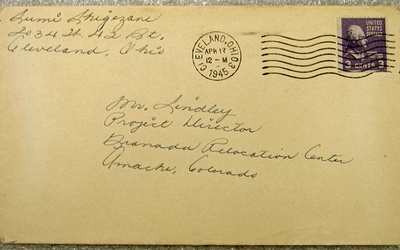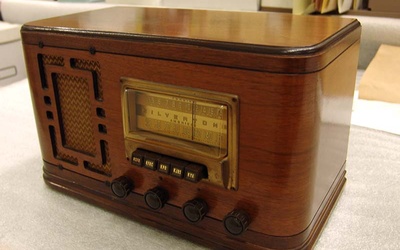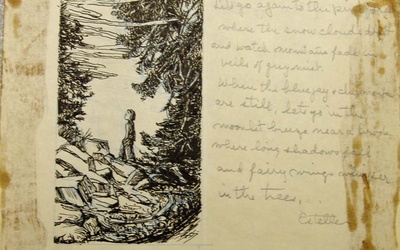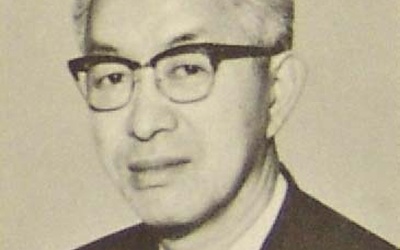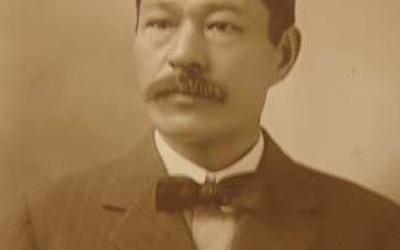Produzindo a história nipo-americana: uma exploração através dos arquivos do JANM

Saudações, Descubra Nikkei! Embora todos saibamos que o Descubra Nikkei é um projeto global on-line, você sabia que na verdade ele está sediado no Museu Nacional Nipo-Americano (JANM) em Los Angeles, Califórnia? Para aqueles que nunca tiveram a oportunidade de visitar o JANM (comumente pronunciado ja-num ), eu recomendo fortemente que vocês visitem sempre que estiverem no sul da Califórnia! E para aqueles que estão por perto, deveriam considerar o voluntariado – é definitivamente verdade quando dizem que você pode obter muito mais com isso do que investe!
Nos últimos meses, estive numa “missão especial” no JANM, que felizmente inclui acesso completo à coleção permanente de 80.000 itens do museu. Meu trabalho tem sido traçar o perfil de indivíduos únicos que complicam a “grande narrativa” da história nipo-americana. Idealmente, esta investigação será eventualmente utilizada em futuras exposições públicas no museu. Como historiador e fanático por todas as coisas antigas e nostálgicas, este é o meu caminho.
Nesta série Descubra Nikkei, espero compartilhar algumas dessas histórias mais memoráveis e dar aos leitores do Descubra Nikkei uma visão “dos bastidores” de alguns dos fascinantes recursos primários que o JANM tem em sua coleção permanente. Examinarei alguns exemplos únicos de como a fachada pública da história nipo-americana é criada, registrada e divulgada aqui no JANM. Mas talvez mais importante ainda, tentarei também examinar quão fácil é a história perder-se e quão difícil é encontrá-la.
Confira partes do acervo do museu online >>
Stories from this series
Part 5 of 5 – History is Found: Sumi and Masao Shigezane
31 de Maio de 2012 • Dean Ryuta Adachi
Over the previous four installments of this series, I have attempted to demonstrate many of the ongoing issues here behind-the-scenes at the Japanese American National Museum. We are fortunate to have so many priceless artifacts that help tell the remarkable history of Japanese people in the United States, but for every Namyo Bessho citizenship record, there are countless Joyce MacWilliamson radios. Furthermore, even for all properly documented items we have, it truly is beyond our ability and capacity to go …
Part 4 of 5 – History is Lost: Joyce MacWilliamson
24 de Maio de 2012 • Dean Ryuta Adachi
To this point, we have examined three exceptional figures from the Japanese American community with remarkable stories and records. However, the sad truth is that for every item that we can properly describe, there are countless others that we can’t. In 1999, JANM received a curious donation offer from Ms. Joyce MacWilliamson of Beaverton, Oregon: Joyce MacWilliamson’s father Ramon “Mac” MacWilliamson took temporary ownership of a shortwave radio belonging to the 17 year old son of a Japanese American acquaintance. …
Part 3 of 5 – History is Ignored: Estelle Ishigo
17 de Maio de 2012 • Dean Ryuta Adachi
Estelle Ishigo is a name that may be familiar to many of you. She was one of the few whites to be incarcerated with Japanese Americans during World War II. Estelle voluntarily chose to enter Heart Mountain Relocation Center in order to stay with her Nisei husband, Arthur Ishigo. She authored the book Lone Heart Mountain (1972) and was the subject of Steven Okazaki’s Academy Award winning film Days of Waiting (1990). While Ishigo’s artwork is highly acclaimed in Japanese …
Part 2 of 5 – History is Told: S. John Nitta
10 de Maio de 2012 • Dean Ryuta Adachi
The second part of this series will tell the story of another fascinating individual with a tremendous contribution to Japanese American history. Shigeru “John” Nitta was born in Seattle in 1911, but moved to Japan as a child due to his father’s illness. He eventually returned to the United States (specifically Southern California), where he graduated from San Pedro High School in 1933. He soon moved back to Japan and studied chick sexing, which had recently been established and legitimized …
Part 1 of 5 – History is Made: Namyo Bessho
15 de Dezembro de 2011 • Dean Ryuta Adachi
While not exclusively the case, we can simply surmise that fascinating individuals with fascinating life events make fascinating history. To appropriate Laurel Thatcher Ulrich’s famous phrase, well-behaved Japanese Americans seldom make history. From Fred Korematsu to Toyo Miyatake to Yuri Kochiyama, the Japanese Americans whose lives are memorialized in our exhibitions are primarily those who went against the grain and followed their beliefs. Although the vast heterogeneity and hybridity of Japanese Americans across three different centuries makes it difficult to …

